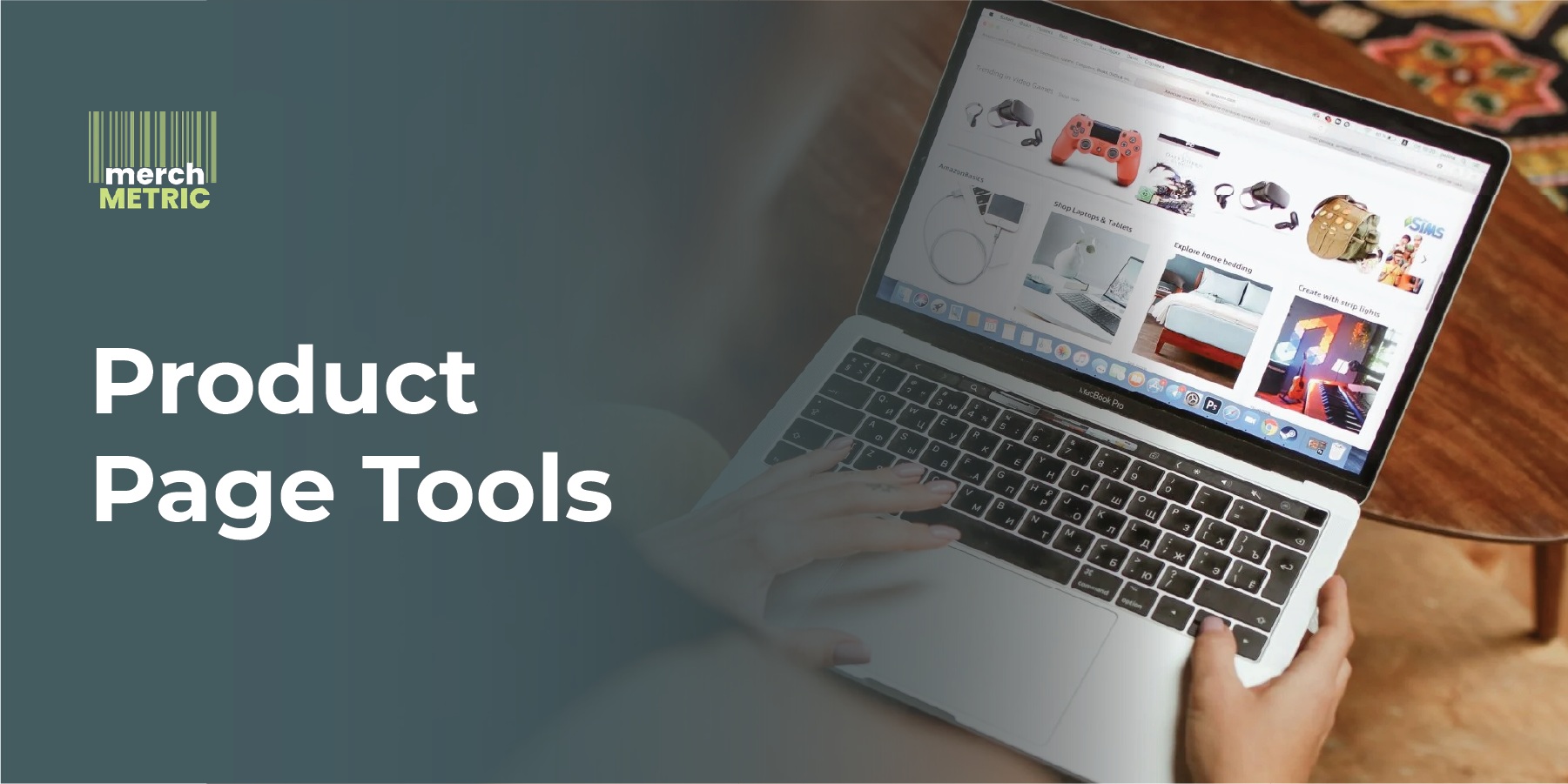Best Analytics Tools for Measuring Product Page Conversion Rates in 2025
Last updated on October 10th, 2025
Running an online business in 2025 isn’t just about uploading products, it’s about making sure every page converts visitors into buyers. At MerchMetric, we specialize in product content optimization, product page optimization, and product data optimization, powered by AI-enabled insights. Our role is not only to enhance product listings but also to provide the analytics and intelligence businesses need to scale profitably.
MerchMetric eCommerce Optimization Solutions 2025
|
Specifics |
Details |
|
Key Services |
Product content optimization, product page optimization, product data optimization, product listing optimization, analytics & reporting |
|
Specialized Support |
AI-enabled, human-led services designed to track, measure, and improve product page conversion rates with actionable insights |
|
Industries Served |
eCommerce retailers, consumer goods, electronics, fashion, beauty, home décor, and multichannel sellers |
|
Client Types |
SMBs, mid-market, enterprise brands, and global eCommerce businesses |
|
Contact Details |
USA: 99 Wall Street #625, New York, NY – 10005 INDIA: 2nd & 3rd Floor, Vijay Towers, Father Randy Street, RS Puram, Coimbatore, Tamil Nadu – 641002 PHILIPPINES: VEB Solutions, 19F Marco Polo Ortigas, Sapphire Rd, Ortigas Center, Pasig, Metro Manila – 1600 |
At MerchMetric, we combine AI-enabled analytics with e-commerce product content expertise to give brands clarity on what works and what doesn’t. From fixing weak product titles to restructuring data for better engagement, we help businesses improve their product page conversion rate with measurable results.
Table of Contents
Why Measuring Product Page Conversion Matters
Tool #1: Google Analytics 4 – A Must-Have
Tool #2: Hotjar – See What Users Do
Tool #3: Crazy Egg – Affordable Behavior Analytics
Tool #4: Optimizely – A/B Testing Powerhouse
Tool #5: MerchMetric – Conversion-Focused Insights
Case Study: Turning Data into Conversions
Frequently Asked Questions (FAQs)
Why Measuring Product Page Conversion Matters
If you can’t measure it, you can’t improve it. That’s the golden rule I follow when it comes to product page optimization. Your product page conversion rate tells you what percentage of visitors are actually buying, and if the number is low, something needs fixing.
In fact, studies show that the average eCommerce conversion rate hovers between 2–3% globally. That means for every 100 visitors, only 2–3 are purchasing. With millions of dollars in ad spend driving traffic to product pages, a poorly optimized page is simply wasted money.
Here’s what analyzing conversion data helps you uncover:
- Weak product titles and descriptions (needs product title optimization)
- Gaps in images, videos, or other visual content
- Pricing issues compared to competitors
- Page speed and mobile experience flaws
Every time we help a client with product listing optimization, the first step we take is looking at the numbers. Conversion data is the foundation of all decisions.
Tool #1: Google Analytics 4 – A Must-Have
I’ll be honest, Google Analytics 4 (GA4) may feel overwhelming for beginners, but it’s still the go-to tool for measuring conversions. GA4 gives you deep insights into how users move through your site and where they drop off.
Why it works well for product page conversion:
- You can set up custom events to track “add to cart” clicks and completed purchases.
- Funnel visualization helps you see which step in the checkout process needs fixing.
- Enhanced eCommerce reports highlight product-level performance.
For one of our retail clients, we used GA4 to discover that 60% of users dropped off after clicking “add to cart.” The reason? Slow page load times during checkout. After fixing it, their product page conversion rate increased by 27%.
That’s the kind of insight that shows why analytics isn’t optional, it’s critical.
Tool #2: Hotjar – See What Users Do
Numbers are great, but sometimes you need to see behavior in action. That’s where Hotjar comes in. It uses heatmaps, recordings, and surveys to show how people interact with your product pages.
I love Hotjar because it answers questions like:
- Are people scrolling far enough to read the product description?
- Which buttons are being ignored?
- Do customers abandon the page because of poor layout?
For example, we worked with a fashion retailer whose sales were stuck. Hotjar showed us that customers weren’t scrolling down to see size charts because the “Add to Cart” button pushed everything else too far. By restructuring the page, their product page conversion rose by 15%.
Pairing Hotjar with product data optimization is powerful, it ensures your content not only exists but is placed where it gets seen.
Tool #3: Crazy Egg – Affordable Behavior Analytics
If Hotjar is a premium solution, Crazy Egg is the more affordable cousin. It also offers heatmaps, click tracking, and A/B testing features. What I really like is how simple it is to set up, making it perfect for businesses just starting with product listing optimization.
Why Crazy Egg is worth it:
- Easy setup without coding.
- A/B testing tools for testing different product titles and descriptions.
- Visual reports that are easy to understand for small teams.
In one client case, we tested two variations of a product title optimization for a home appliance brand. The version with a clear keyword and benefit (“Energy-Saving Air Purifier with HEPA Filter”) outperformed the generic version by 22% in conversions.
It proved again that even small tweaks, guided by data, can pay off big.
Tool #4: Optimizely – A/B Testing Powerhouse
I often say that no matter how much experience you have, you can’t predict customer behavior perfectly. That’s why testing is key. Optimizely is the tool I turn to for structured A/B and multivariate testing.
With Optimizely, you can:
- Test product titles, images, and descriptions directly.
- Run experiments on page layout, call-to-action buttons, and pricing.
- Get statistically significant results before making big changes.
One real-life case that sticks with me: a consumer electronics company wanted to improve their product page conversion rate. We ran an Optimizely test on their main call-to-action. “Buy Now” vs. “Get Yours Today.” Surprisingly, the second phrase boosted conversions by 11%.
This is why product content optimization can’t rely on assumptions; testing shows the truth.
Tool #5: MerchMetric – Conversion-Focused Insights
Now, let me talk about a tool I know firsthand: MerchMetric. It’s designed specifically for product page optimization and tracking conversion-related metrics. Unlike general analytics platforms, MerchMetric focuses on eCommerce KPIs that matter to sellers.
Here’s what I like about it:
- Automated reports for product-level conversion rates.
- Insights into which products need urgent product data optimization.
- Competitive benchmarks to see how your listings perform against others.
A beauty brand we worked with used MerchMetric to analyze their listings. The tool highlighted that their best-selling items had weak product title optimization and inconsistent bullet points. After rewriting and restructuring, their conversion rate grew by 19% in just one quarter.
At MerchMetric, this is exactly how we help clients, combining analytics with hands-on product listing optimization to deliver measurable results.
Case Study: Turning Data into Conversions
One of the most eye-opening experiences for me was with a mid-sized home décor seller. They had strong traffic but terrible conversions. Using a combination of Google Analytics, Hotjar, and MerchMetric, we identified three issues:
- Product titles were too vague.
- Images were low quality and not mobile-friendly.
- Descriptions lacked keywords.
We implemented product content optimization by rewriting titles, upgrading visuals, and restructuring descriptions. After three months, their product page conversion rate doubled from 2.1% to 4.2%.
This case showed me that the right analytics tools plus the right execution create real transformation. That’s why at MerchMetric, we don’t just track data, we act on it.
Frequently Asked Questions (FAQs)
1. How often should I check product page conversion rates?
At least once a week. Regular tracking helps you spot sudden drops or improvements before they impact sales significantly.
2. Do analytics tools work for all eCommerce platforms?
Yes, most major tools like GA4, Hotjar, and MerchMetric integrate easily with Shopify, WooCommerce, Magento, and Amazon stores.
3. What’s the fastest way to improve product page conversion?
Start with visuals and product titles. Optimized photos and clear titles often deliver quick, measurable results.
Conclusion
In 2025, measuring and improving product page conversion rates is no longer optional; it’s the backbone of eCommerce success. Tools like GA4, Hotjar, Crazy Egg, Optimizely, and MerchMetric give you the visibility you need. But numbers alone don’t drive growth; it’s about combining data with action through product content optimization, product data optimization, and product listing optimization.
At MerchMetric, we help businesses take the guesswork out of optimization. From identifying weak spots to executing changes, our team ensures every product page is built to convert.
Ready to Optimize Your Product Pages?
Partner with MerchMetric to measure, test, and improve your product page conversion rates. Whether you’re a growing brand or an established retailer, our solutions help you boost efficiency, cut costs, and scale profitably.
Get Your Free Consultation Today
Suggested Reads:
- Which PIM Software in 2025 Will Help You Stop Drowning in Product Chaos
- How to Tackle Product Content Optimization When Managing 10,000+ SKUs Across Marketplaces
- New Amazon Sellers Are Launching Businesses With Zero Capital Using AI and Dropshipping



